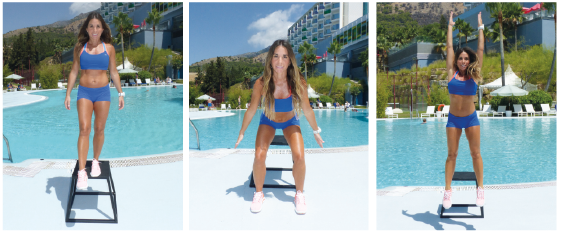In reality, “plyometric” refers to extending muscles by exerting maximum force – or the non-concentric phase of a muscle contraction. And why is jumping used as a form or training? Verkhoshansky, one of the fathers of strength training, defined plyometric strength as “the specific capacity to develop an elevated thrust of strength immediately after a sudden mechanical muscle stretch”.
This stimulus is known as SSC (Stretch-Shorten Cycle) – hence the relationship between plyometrics and jumping. The acceleration caused by gravity when a person jumps from a certain height is the easiest way to achieve this mechanical stretching, which in turn allows us to apply quite interesting stimuli to improve performance.
Plyometric movements are designed to improve coordination and also to link strength and speed. These exercises are the perfect combination of stability, mobility, strength, power and dynamic balance, and they are used to boost jumping heights, sprints and flexibility, and also to improve the ability to coordinate movements – as occurs with the golf swing. In addition, they enable you to generate strength at a rapid and efficient pace, and to improve your body’s elasticity. The body is like an elastic tape, and each movement has its elastic component.
When stretching, you need to stabilise one side and extend the other. This stabilisation is the anchor point for the muscles and connecting tissue, allowing you to release a considerable amount of energy. By improving your body’s elasticity, you not only improve your ability to move more efficiently but also reduce the risk of suffering injuries, as elasticity provides a combination of brakes – in a manner of speaking – and deceleration tools that prevent injuries by protecting the joints and helping the body cope with rapid strains.
I highlight some of these examples here...

Exercise 1
“Jumping from box”: Stand on top of the box, legs apart the same width as your shoulders, the toes of one foot on the edge, and of the other foot in the air... from this position lower yourself from the box landing on both feet, immediately jump as high as possible, and land again with your feet together.

Exercise 2
“Throwing medicine ball”: Stand next to a wall, with the knee further away from the wall resting on the floor... pick up a medicine ball with your arms extended and at chest height, and from this position fling the ball – and pick it up again.




